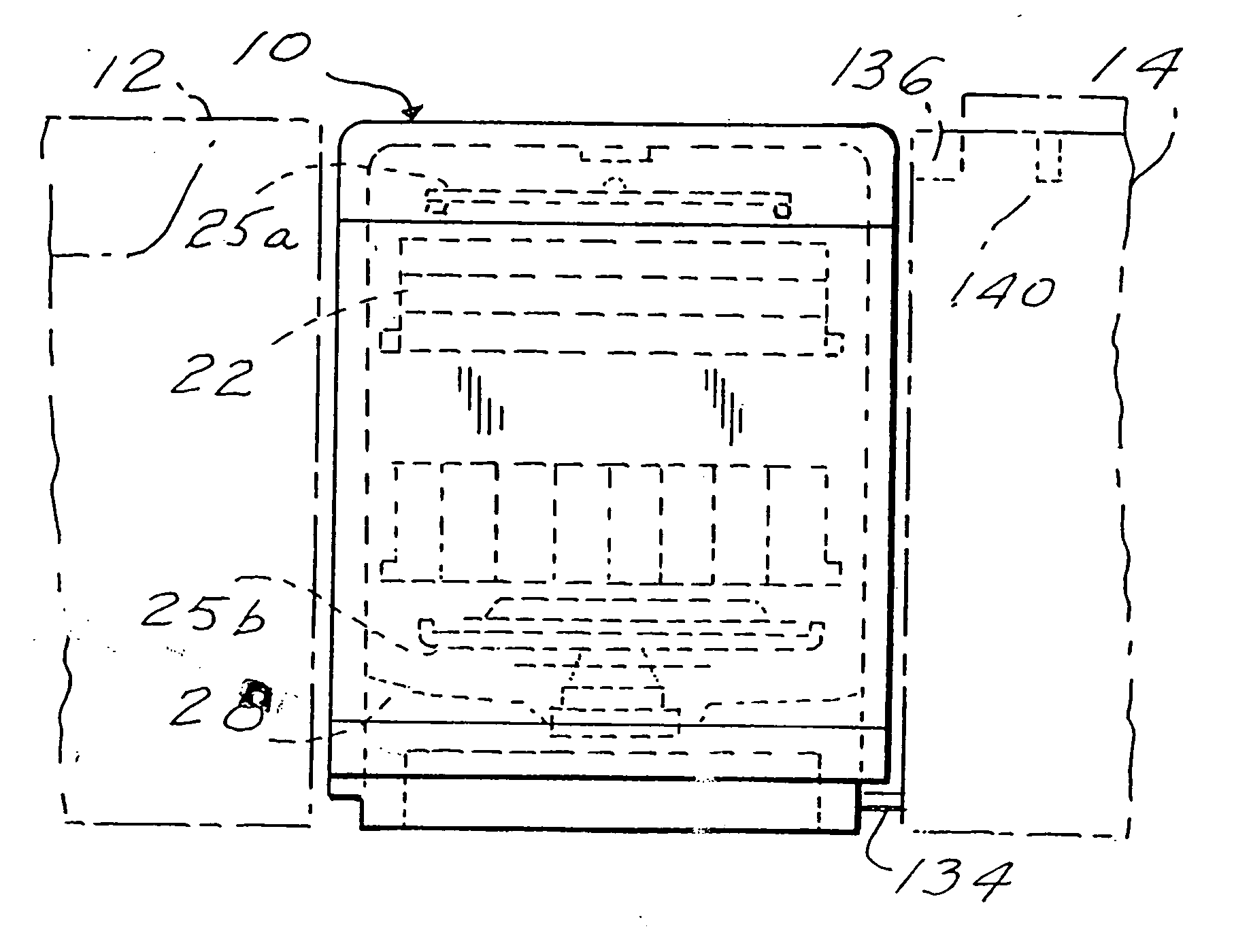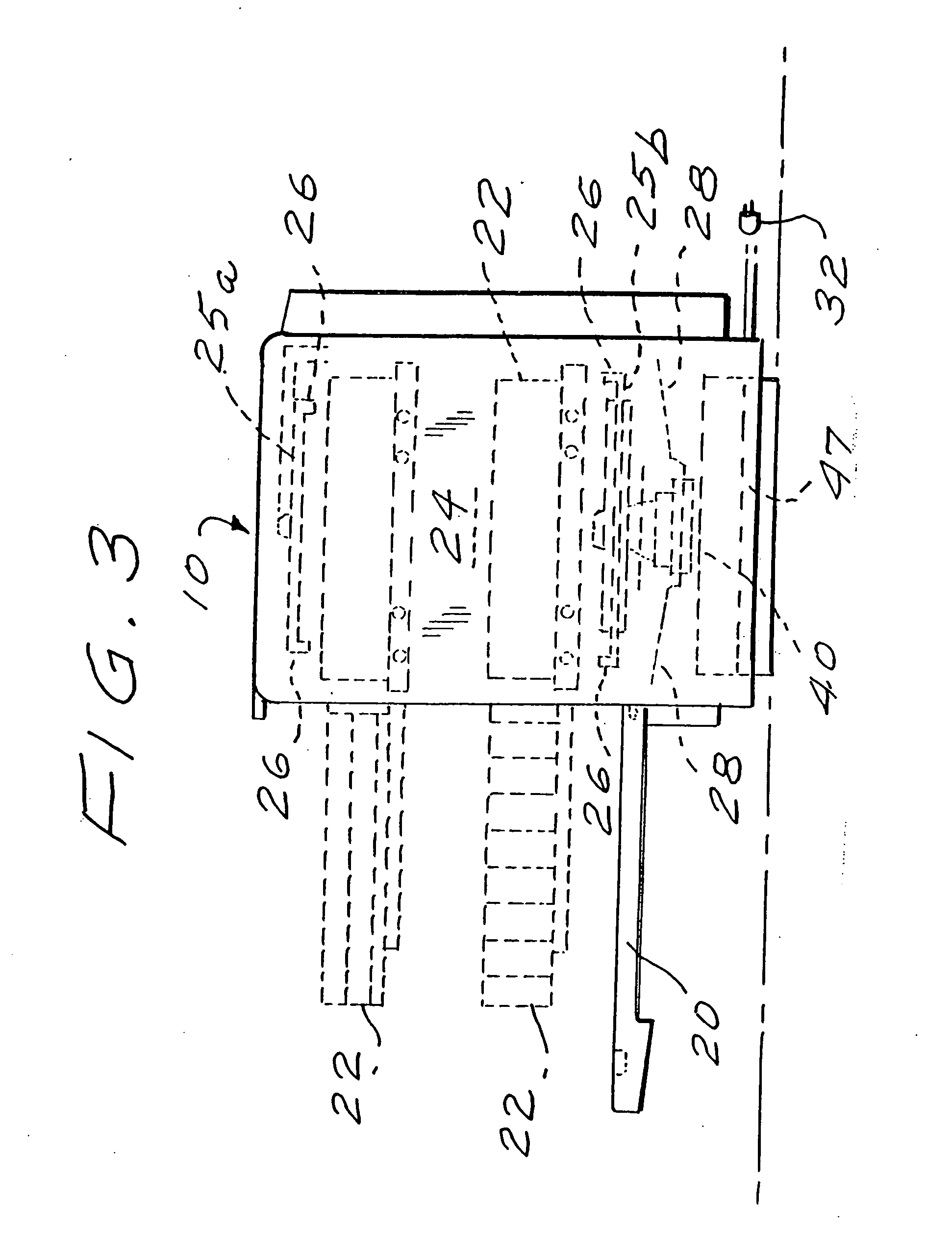Rapid residential dishwasher
a residential dishwasher and dishwasher technology, applied in the field of dishwashers, can solve the problems of inability to achieve the implementation of the sanitization standard of 150° f./180° f. or 165° f./165° f., and achieve the effect of simple and inexpensive manufacture, use and maintenan
- Summary
- Abstract
- Description
- Claims
- Application Information
AI Technical Summary
Benefits of technology
Problems solved by technology
Method used
Image
Examples
Embodiment Construction
[0055] Referring now to the drawing, and in particular to FIGS. 1 and 2 thereof, therein illustrated in solid line is a dishwasher according to the present invention, generally designated by the reference numeral 10. The dishwasher 10 fits in the normal counter or cabinet space allocated for a U.S. residential dishwasher and is illustrated as being sandwiched between a sink 12 on one side and a stove 14 on the other side, both the sink 12 and stove 14 being illustrated in phantom line.
[0056] Referring now also to FIG. 3, therein illustrated is the dishwasher 10 with the front door 20 pivoted to a lowered orientation. Two racks 22 extend at least partially out of the washing chamber 24 for loading or unloading of kitchenware therefrom. The racks 22 are configured and dimensioned to be slidably received within the washing chamber 24 and for holding kitchenware (not shown) such as glasses, dishes, pots, pans, silverware and the like, to be bathed, washed, rinsed and optionally cooled....
PUM
 Login to View More
Login to View More Abstract
Description
Claims
Application Information
 Login to View More
Login to View More - R&D
- Intellectual Property
- Life Sciences
- Materials
- Tech Scout
- Unparalleled Data Quality
- Higher Quality Content
- 60% Fewer Hallucinations
Browse by: Latest US Patents, China's latest patents, Technical Efficacy Thesaurus, Application Domain, Technology Topic, Popular Technical Reports.
© 2025 PatSnap. All rights reserved.Legal|Privacy policy|Modern Slavery Act Transparency Statement|Sitemap|About US| Contact US: help@patsnap.com



